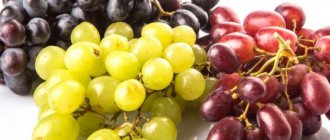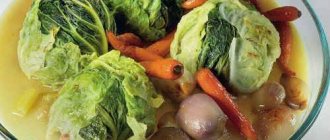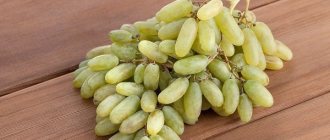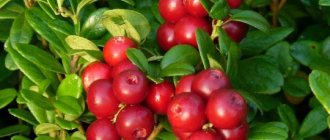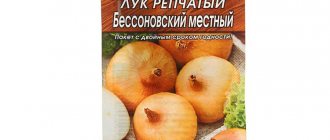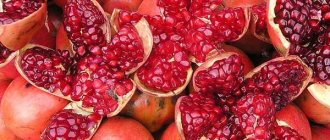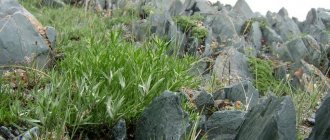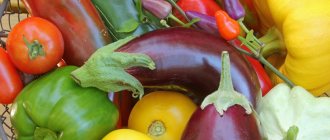Description of strawberries
The herbaceous plant of the family Varicolored received its name from the Old Slavonic “tuber”, as it is round, like a potato. But in addition to the official “name,” the berry has many names, depending on the place where it grows.
The fruit is spherical, pinkish in color, sweet in taste. It would seem like an ordinary strawberry, but if you look closely, there are obvious distinctive features:
- the taste of the fruit is much sweeter than that of the garden;
- rich, juicy aroma;
- As for the color, we can safely say that wild strawberries are rarely richly red; rather, they are a pinkish or white-yellow shade with a reddish top, which is more characteristic of unripe garden-type plants;
- the shape is round, in contrast to the oval berry of a garden plant. Small in size;
- the leaves that make up the calyx are tightly pressed to the berry - this distinguishes it from strawberries and other varieties of strawberries;
- usually no more than 20 cm in length, the stem is thin;
- the surface of the lower leaves is woolly, soft to the touch, with a slightly silvery light tint;
- oblique undeveloped root and short “creeping” shoots, popularly called “tendrils”;
- characterized by active flowering of the stem;
- just like the garden one - a perennial plant;
- unisexual berry.
Strawberries confirm their “wild” origin by the structure of the stem. To pick a sweet berry you will have to make an effort. You can find it in the thickets at the edge of the forest. It loves sunlight and humidity, but it is better to store it in dry places protected from light. It grows not only in the south of Russia, but also in Asia, in the Caucasus, its sprouts accumulate under pine trees, in juniper bushes along the side of paths.
Interesting! In botany, the strawberry fruit is actually a brown seed found on the surface of the berry, called the receptacle.
The flowering period can be observed in early May - early June, and the delicacy can be collected already in July - early August.
Differences between strawberries and wild strawberries
Many people don't see the difference between wild strawberries and strawberries, and they really are incredibly similar. However, professional botanists or experienced berry pickers can easily distinguish these berries.
The main differences between strawberries and wild strawberries:
- strawberry flowers are larger than its berries
- strawberry fruits have a brighter and more saturated color
- Strawberry fruits are more difficult to separate from the stem
- strawberries have fewer fruits
- strawberries and wild strawberries have quite different taste qualities
- strawberry sepals are located directly on the fruit
Chemical composition
The composition of the chemical substances of the berry covers a decent part of the periodic table. These include: calcium, potassium, magnesium, iron, many organic acids. The berry, which grows in the forest, is especially rich in iron and calcium. It contains even more iron than apples and grapes. Organic matter in strawberries includes malic and citric acids.
The chemical composition also includes:
- sugar (about 5%);
- nitrogenous, tannin compounds;
- pectins;
- flavonoids;
- vitamins B, C, E, PP;
- leaves contain ascorbic acid (approximately 300 mg);
- micro- and macroelements.
Interesting! The substances found in strawberries have much in common in composition with aspirin, which is taken for colds. Therefore, if you have headaches, body aches or fever, strawberries will not be an unnecessary addition to your treatment.
When and how to collect
The fruiting period, which lasts only a week, varies greatly among wild berry plants. The time frame depends on the region of growth and its agroclimatic conditions. Since spring comes earlier in the southern regions and there are many sunny days, they start collecting here first of all. In the Moscow region the weather is cloudier, and recurrent frosts are observed even in May.
The best container for picking strawberries is a wicker basket
Table. Fruiting periods by region
| Name | Deadlines |
| Ural | From the second half of June |
| Moscow region | From early June to mid-July |
| Krasnodar region | Second half of May |
Benefit
Based on the chemical composition, you can be sure that the body is saturated with almost all the elements necessary for health. Due to the fact that strawberries contain a lot of iron and calcium, they are used in both dietary and medical nutrition. With the help of fresh delicacies, they not only lose weight, but also gain strength, strengthen the immune system, increase appetite, improve the functioning of the digestive tract and quench thirst.
The most effective part of the plant used in treatment is not the fruit itself, but the base, and even the leaves. It is from these that medicinal products are used in folk medicine.
Thanks to certain substances, strawberries have a positive effect on certain parts of the human body:
- pectin helps the functioning of the stomach and intestines, removes harmful substances from the body, thereby speeding up digestion;
- glucose and fructose replace sugar, thereby fitting perfectly into a healthy diet;
- Potassium and magnesium help the heart function, normalizing blood pressure. Also reduces cholesterol levels;
- flavonoids are the very substances that are involved in the fight against cancer cells, therefore, including berries in the menu, you can carry out secret prevention of the disease;
- Thanks to antioxidants, brain function improves. By eating food, you can train your memory and improve your vision;
- Iodine helps the thyroid gland function properly.
Inflammatory processes and eye infections will not be scary for a person.
- For women it is useful for anemia and uterine bleeding.
- When dried, they are used to make an infusion, which serves as an excellent diaphoretic and relieves swelling and excess fluid.
- They are also recommended for older people, as the berries have a rejuvenating effect and fight anemia, rheumatism, atherosclerosis, and the accumulation of salts in the body.
- Due to the ability of strawberries to lower sugar, they are allowed for people with diabetes.
The benefits and harms of strawberry jam
The delicacy allows you to enjoy the taste and aroma of a forest plant during the cold season. However, the preservation of valuable qualities depends on the method of preparing the jam. Wild strawberries, ground with sugar, retain maximum nutrients. It contains vitamins, microelements and macroelements that help cope with ARVI. The beneficial effect on the reproductive system is essential.
A delicacy that is simmered over a fire for a long time loses a large amount of nutrients. This is due to the influence of high temperatures. Forest plant dessert should be consumed in limited quantities due to its significant sugar content.
100 g of strawberry jam contains 219 kcal
Application
In addition to the fact that strawberries themselves are delicious fresh, with cream, in fruit salads, on a cake, they are popular in the form of jam and preserves.
Use is not limited to food. It has found wide application in folk medicine and cosmetology.
In folk medicine
Not only the fruits, but also the roots, leaves, and stalks of forest plants are used as a remedy. These ingredients form part of the recipe for tinctures with vodka or moonshine. Taking them in small doses, both internally and externally, provides the same benefits as eating fresh berries.
The simplest decoction recipe saves many from insomnia, hypertension, sclerosis, intestinal disorders, and gastritis. They wipe the skin with it in advanced stages of eczema and use it to heal wounds. For preparation, dried fruits, stalks, leaves and roots of the plant are used, poured with boiling water and infused for about a day.
It is used not only as a vitamin and prophylactic agent. A warm, sweet drink calms the central nervous system, relieves stress, and has a diuretic effect on the body. A decoction of roots and leaves is drunk for kidney diseases and colds, and flower tinctures help improve heart function.
The most popular tincture is based on moonshine; it is made in several stages:
- Preparation of sugar syrup. Sugar is added to boiled water and boiled with occasional stirring until completely dissolved.
- Clean peeled berries are placed in a jar, filled with syrup and moonshine.
- The tightly closed jar is placed in a dark room for a month. During this time, the liquid has time to be completely saturated with berry juice and ferment to the desired state.
- The finished drink is filtered and poured into a glass container.
In cosmetology
The main way to use berries in the field of beauty is cosmetic masks. Their healing effect is also important - strawberry mixtures are applied to the face when they want to get rid of acne or freckles. In the second case, some dairy ingredient is added to the recipe.
The mask recipe is as follows: fruits, leaves, roots and other components of the plant are ground to a puree and applied to the desired part of the body. Lemon juice or cottage cheese is sometimes added to the mixture, the contents are wrapped in gauze and applied as a compress for several minutes. It is recommended to rinse off with warm boiled water or milk. This makes the effect more noticeable and the skin softer.
Benefit:
- Tightens pores.
- Dries out oily skin.
- Whitens.
Using the strawberry mixture you can make lotion, tonic, cream at home. To do this, add regular cream or honey to pureed strawberries and apply to the skin. Tonic can be prepared using vodka, for which the berries are poured with alcoholic drink (about 300 ml) and infused in the refrigerator for several minutes. Can be kept for about a month in a dark, cool place, and diluted with water before use.
In cooking
The use of strawberries in food is obvious, but it is worth noting that when dried, boiled, or canned, this berry can be even tastier and healthier. Strawberry compote or juice perfectly quenches thirst; children and adults drink it with pleasure. The pie filling is made from the dried forest delicacy. The berries make delicious jelly and pastille.
For those who do not suffer from allergies, a “strawberry lunch” can be a reason for a fasting day. And those who are not supporters of diets, but love exquisite classics, can enjoy dessert with cream.
Interesting! People prone to allergies can mitigate the effect by eating strawberries with fermented milk products.
Just like any other strawberry, wild strawberries can be used to make preparations for the winter in the form of preserves, jams, tinctures, and confitures. Additionally, dried fruits can be brewed into tea as a natural flavoring. The drink turns out tasty and fragrant. A good alternative is to freeze the berries to use in winter for baking and drinks.
Does it need to be cleaned?
After being brought home, the harvested crop is cleaned of green sticks and leaves. This is considered the most correct and hygienic, but many do not perform this procedure, thinking that they can do without it. Of course, nothing bad will happen if this is not done; on the contrary, many housewives believe that greens add a certain piquant shade to the cooked jam. It happens that there is simply no energy or time to tear off the tails.
Cleaning strawberries is at the discretion of the hostess
If the sepals break off, the strawberries are laid out in a room where there is free access to air, or it is periodically ventilated. Place the berries on paper and dry them. Greens torn from berries are often used to brew aromatic and healthy tea or added to a variety of infusions and decoctions.
Why is it called "wild"?
Since the 18th century, the popularity of strawberries has increased. It was more famous than strawberries and had several names at once: musky, garden, forest, wild, green, the name also specified the place where it grew. But the one that originated far from civilization, in wild forests and overgrown ravines, began to be called wild, so as not to be confused.
Later they were also called strawberries, meadow strawberries, and green strawberries (based on size and color). The berry acquired its last “name” not by chance, since it has many similarities with its “sister” and is essentially a wild berry of the forest, which is where the name comes from.
Botanical description and characteristics
There has long been an opinion that strawberries are a berry that grows on forest edges, and strawberries are a cultivated plant grown in summer cottages and front gardens. However, according to botany, this idea is incorrect. We suggest you figure out what these plants look like, what they have in common, and what differences they have.
Did you know? Strawberries got this name because their fruits almost touch the ground when ripe.
Strawberry
Strawberry is the name of several species of plants from the genus Strawberry of the Rosaceae family, which bear spherical berries. Translated, it means “tangle”, “spherical body”.
Previously, green strawberries (Fragaria viridis) were called this name . And today it is better known as wild, forest, half strawberry. This species was the first to be grown in household plots, and later it was replaced by others - first nutmeg (Fragaria moschata), and then pineapple or garden (Fragaria ananassa).
Contraindications
Any sweet fruit or berry, the consumption of which exceeds the norm, turns into an allergen. Therefore, you do not need to be an expert to take this fact into account. Otherwise, eating a lot of strawberries is strictly prohibited in case of stomach diseases (ulcers, gastritis), cirrhosis, diathesis, appendicitis, chronic colic. Not recommended in large quantities for pregnant and nursing mothers, as well as people with individual intolerance.
Interesting! The allergic reaction is explained by exoticism. Now they are used too rarely and imported, and therefore the body does not develop the appropriate immune defense.
Medicinal properties and use in folk medicine
For medicinal purposes, it is better to use the berries together with the stalks, which are a source of many useful substances.
Fresh berries quench thirst well, stimulate appetite and regulate the activity of the digestive tract. They promote hematopoiesis. The vitamin K contained in the leaves has a hemostatic effect, so they are used for uterine bleeding and heavy menstruation.
Strawberries are low in glucose but high in fructose, so they are good for diabetics to eat. Juice from the berries is prescribed for liver diseases. The berries and leaves are dried in the winter to treat colds, as they have anti-inflammatory, diaphoretic and antipyretic effects. They are useful for kidney stones and salt metabolism disorders.
A decoction of flowers treats heart and vascular diseases, as well as colitis. This decoction strengthens the immune system and protects the body from cancer.
Externally, decoctions of leaves, flowers and berries are used for eczema, diathesis, boils and long-healing wounds and ulcers.
Preparation and storage
The leaves can be prepared for harvesting in the spring, and the roots can be collected for medicinal purposes in late autumn. It is recommended to dry the components under a canopy, away from the sun and moisture, spreading them out on a spacious surface. The berries are also dried in the oven at minimum temperatures. Raw materials are stored for about 1-2 years.
It is best to store the preparations under gauze to protect them from insects. Fresh berries are best stored separately from rotten fruits in the refrigerator and under a closed lid.
The harvest is not always as big as we would like. But knowing all the benefits and ways to use it for health, you can go to the forest more often.
What does wild strawberry look like?
There are no strawberries in nature as such. There are green strawberries - this is the name of the wild berry. The Latin name is Fragaria Viridis. In literature and everyday life you can find other names - Polunitsa, Muscat Strawberry (it is also considered strawberry).
The first mention of the berry bush dates back to the time of Pliny the Elder. In his writings, he described the benefits of fruits. Virgil also mentioned its healing properties.
The wild form of the berry is represented by low bushes
Height can vary from 5 to 35 cm. The rosette is formed by trifoliate foliage. It also looks typical for cultivated forms: the top is dark green, and the bottom is paler and covered with fibers.
Growing strawberries from seeds
Growing strawberries from seeds
Strawberry seeds are used for propagation. This is a complex process, but some varieties cannot be grown any other way. The berry seeds are small. They are sown in the soil or grown in seedlings. Regardless of the method, the seeds are pre-stratified. This will help speed up their germination and prevent damage by pests and pathogenic microorganisms.
Stratification is done in two ways:
- Place damp gauze or cotton wool in a container and place seeds on it. The container will keep in the bottom of the refrigerator for 60-75 days. It is important to periodically control the humidity.
- Sow seeds with soil in a container and also store them in the refrigerator.
In addition, for strawberries to sprout, you will need sufficient lighting, proper watering, and monitoring the condition of the soil.
Where do strawberries grow?
Where do strawberries grow?
The berry prefers to grow in forest clearings, slopes, edges, and meadows. Based on botanical data, it originally appeared in East Asia. Over time, it settled throughout Europe, America, Russia, Ukraine, Germany, Italy, and Africa. It is popular all over the world for its taste and beneficial properties.
There are no special soil requirements for growth. Therefore, you can often see shrubs on sunny edges and shady places mixed with other plants. The berry also grows in mountainous areas.
Useful properties of strawberries
Strawberries contain sugars, organic acids, fiber, pectin, tannins, nitrogenous substances, alkaloids, salts of iron, phosphorus, calcium, cobalt, manganese, B vitamins, carotene, ascorbic and folic acids. The leaves contain ascorbic acid, tannins, essential lubricants and few alkaloids.
Fresh fruits and a decoction of dried berries have a beneficial effect on digestion, quench thirst, stimulate hunger, eliminate inflammatory and ulcerative processes in the gastrointestinal tract, bile and urinary tracts. Strawberries are useful for gastritis, colitis and dysentery.
Fresh fruits are a good remedy for treating anemia. Strawberry leaves are used for atherosclerosis, diseases of the kidneys, bladder and spleen, for bronchial asthma, hemorrhoidal and uterine bleeding, stones and sand in the kidneys. They are used as a diuretic for salt metabolism disorders and to lower blood pressure.
An infusion of leaves helps with colitis, gastritis, bronchial asthma, cholelithiasis, helps improve sleep, and normalizes peristalsis. In addition, the infusion dilates blood vessels and increases the overall tone of the body. Strawberry leaves are included in vitamin teas, which have a general strengthening, hematopoietic and anti-sclerotic effect, and improve metabolism.
A decoction of strawberry leaves and fruits is taken as a source of vitamins. It is prepared as follows: 20 g of dry crushed raw material is poured into 1 glass of hot water and boiled for 10 minutes, then left for 2 hours, filtered and taken 1 tablespoon 3 times a day. Similarly, a decoction is taken for atherosclerosis, coronary heart disease and arrhythmia.
To treat hypertension, it is useful to take an infusion of strawberry leaves. For this purpose, 20 g of dry crushed raw materials are infused for 2 hours in 1 glass of boiling water, filtered and drunk 1 tablespoon 3-4 times a day.
As a general tonic for mental fatigue and anemia, take a decoction of strawberry leaves: 20 g of dry crushed raw material is poured into 1 glass of hot water and boiled for 5-10 minutes, then infused for 2 hours, filtered and taken 1 tablespoon 3 times a day. . For diseases of the spleen, take a decoction of the leaves, 1 tablespoon 3-4 times a day.
To stimulate appetite for enterocolitis, gastric and duodenal ulcers, drink an infusion of strawberry leaves 1 tablespoon 3-4 times a day. The same infusion is useful as a lotion for bleeding hemorrhoids. For diseases of the biliary tract, take this infusion 1/2 glass 3-4 times a day before meals. A decoction of the leaves of strawberry rhizomes helps with bronchitis. It is prepared as follows: pour 20 g of dry crushed raw materials into 1 glass of hot water and boil for 15 minutes, then filter and bring the volume of liquid to the original volume with boiled water. Take 1 tablespoon 3-4 times a day.
A decoction of strawberry leaves and fruits helps with diseases of the kidneys, bladder, bedwetting and is used as a diuretic for salt metabolism disorders. For this purpose, 20 g of dry crushed raw materials are poured into 1 glass of hot water and boiled for 5-10 minutes, then infused for 2 hours, filtered and the volume of liquid is brought to the original volume with boiled water. Drink 1 tablespoon 3 times a day.
For urolithiasis, for therapeutic and preventive purposes, especially in the preoperative period, when the type of stones is not determined, an infusion of strawberry leaves is used: 20 g of dry crushed raw materials are infused for 2 hours in 1 glass of boiling water, filtered and drunk 1 tablespoon 4 times a day.
Dangerous properties of strawberries
Eating strawberries in large quantities can cause side effects - redness of the skin, itching, rash, dizziness, vomiting and a lot of other unpleasant sensations that go away when you stop eating the berries.
It is not advisable to eat strawberries during pregnancy, as their small seeds are a strong allergen. In addition, they irritate the intestinal mucosa and are not recommended for use in diseases of the gastrointestinal tract, as well as in renal and hepatic colic, biliary dyskinesia, and pancreatitis.
Sources used:
- https://rastenijainfo.ru/klubnika-lesnaya/
- https://vsejagody.ru/lesnye/zemlyanika
- https://narod-dok.ru/travnik/zemlyanika-lesnaya/
- https://7ogorod.ru/plodovye-kusty/klubnika-lesnaa.html
- https://fb.ru/article/334563/dikaya-klubnika-poleznyie-svoystva
- https://sekreti-domovodstva.ru/luchshie-sorta-sadovoj-zemlyaniki.html
- https://zelenyjmir.ru/zemlyanika/
- https://edaplus.info/produce/strawberries.html
The main differences between meadow and forest strawberries
Many inexperienced gardeners confuse meadow and forest strawberries. In fact, the berries are almost no different from each other. But still there are a number of distinctive points:
- fruit size;
- growing area;
- flowering period.
In general, wild strawberries begin to bloom a little earlier and have larger and tastier buds.
Medicinal properties of wild strawberries
This forest plant from roots to fruits, including flowers and leaves, is “packed” with substances beneficial to the human body. Red fruits and vegetables contain phytochemicals with antioxidant effects: lycopene and anthocyanins.
Strawberries treat indigestion, hydrate the body, strengthen the immune system, prevent signs of aging, stimulate the liver, regulate blood sugar, lower cholesterol, cleanse the body, fight cancer, reduce inflammation, treat respiratory diseases.
Wild strawberries are an excellent source of anthocyanins, which are known to help reduce the risk of heart disease.
Strawberries are beneficial for people suffering from dysentery, gout, arthritis, premature aging, high blood pressure, high cholesterol, diabetes, liver damage, weak immune system, constipation and dehydration.
Beneficial properties of strawberry leaves
Leaf tea is a good decaf alternative to green and black tea.
A source of vitamin C, this tea is completely safe even for pregnant women, nursing mothers and children. It soothes, dilates blood vessels, tones, and has an anti-sclerotic effect.
- An infusion of strawberry leaves treats diarrhea, indigestion, relieves bloating and cramps. The leaves contain tannins, biomolecules that bind to proteins, amino acids, alkaloids and other low pH compounds, relieving excess stress on the digestive system. An infusion of the leaves is great for stimulating appetite, improving digestion and nutrient absorption.
- Wild strawberry leaves are a diuretic and have cleansing properties. They not only improve kidney function, but also help remove excess salts, toxins and water from the body.
- Fresh leaves are used as a topical remedy for sunburn. Crushed leaves mixed with oil can be made into a poultice to treat open sores.
- An infusion of leaves reduces blood pressure and dilates blood vessels.
- Simultaneous internal and external use of preparations from the leaves will help in the treatment of eczema and acne.
Beneficial properties of strawberries
Strawberries have high antioxidant activity, which is due to the content of phenolic compounds in them. The berries are useful in the treatment of liver and kidney diseases, as well as rheumatism and gout.
It is useful to eat strawberries on an empty stomach - they stimulate the liver. When the liver is damaged as a result of cirrhosis or hepatitis, the process of regeneration of cells of this vital gland is accelerated.
Traditional medicine knows the following beneficial properties of wild strawberries:
Regulates blood pressure
Strawberries may help lower blood pressure and protect cardiovascular health. The potassium it contains has a vasodilating effect, reducing the load on blood vessels and arteries, and this, in turn, prevents the occurrence of atherosclerosis, heart attacks and strokes.
Supports Hydration
Despite the large amount of nutrients, wild strawberries contain a lot of water. These berries have always helped travelers, saving them from dehydration along the way. After all, the loss of even 1% of fluid from body weight reduces endurance and weakens strength.
Boosts immunity
Strawberries are rich in vitamin C, which is known to strengthen the immune system by stimulating the production of white blood cells and also acts as an antioxidant.
Increases male fertility
Male infertility is a common problem for many. Scientific research has proven that there is a close connection between sperm function and the level of folate, a micronutrient that can be found in the alpine berry. Folate deficiency reduces the chance of fertilization. By consuming more wild strawberries, infertile men can increase sperm motility.
Protects the brain
Wild strawberry fruit contains many flavonoids, especially anthocyanins, which are very beneficial for the brain. By eating these fruits regularly, you can protect yourself from brain aging and other problems such as neurodegenerative diseases, poor coordination, cognitive decline and memory loss. Many studies support the link between consuming strawberries and reducing oxidative damage to our brain.
Speeds up metabolism and promotes weight loss
Wild red strawberries stimulate the production of adiponectin and leptin, which are fat-burning hormones. They help reduce appetite and blood sugar levels, and improve metabolism.
Anthocyanins slow down the absorption of starchy foods, controlling the rise in blood sugar that invariably occurs after eating such foods. By preventing the accumulation of additional glucose in the body, the berry reduces the risk of developing hyperglycemia.
Protects against cancer
Vitamin C, folate, anthocyanins, quercetin and kaempferol are just a few of the many flavonoids in strawberries that act as excellent antioxidants. Together they form a strong line of defense against cancer and tumor growth. Antioxidants neutralize free radicals before they can cause mutations in healthy cells.
Improves mood
This may surprise many, but eating wild strawberries is a good way to relieve stress and anxiety. By regulating several hormones, including adrenaline and cortisol, the potassium in this berry can help you feel better after a hectic and stressful day. Additionally, high levels of folate help in relieving postpartum depression.
Fights asthma
The high vitamin C content in strawberries helps reduce the release of histamine.
Treats gout
Research has shown that high levels of vitamin C can reduce uric acid levels. Good results were obtained with daily intake of vitamin C in the amount of 500 mg.
